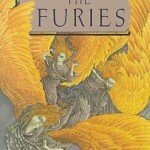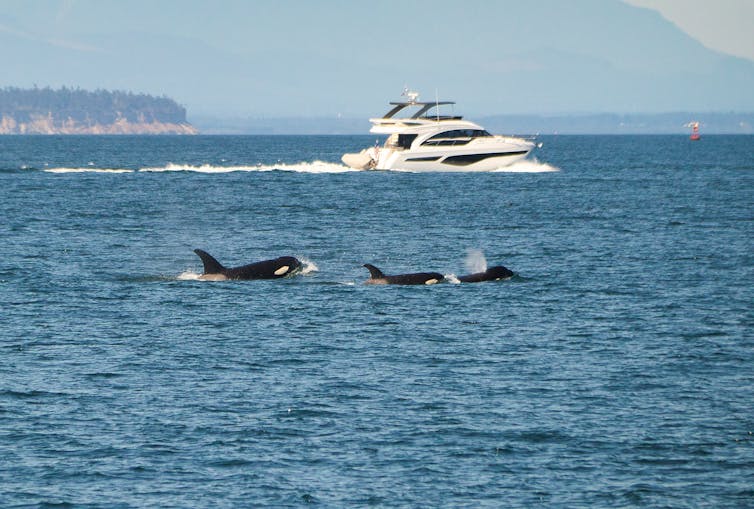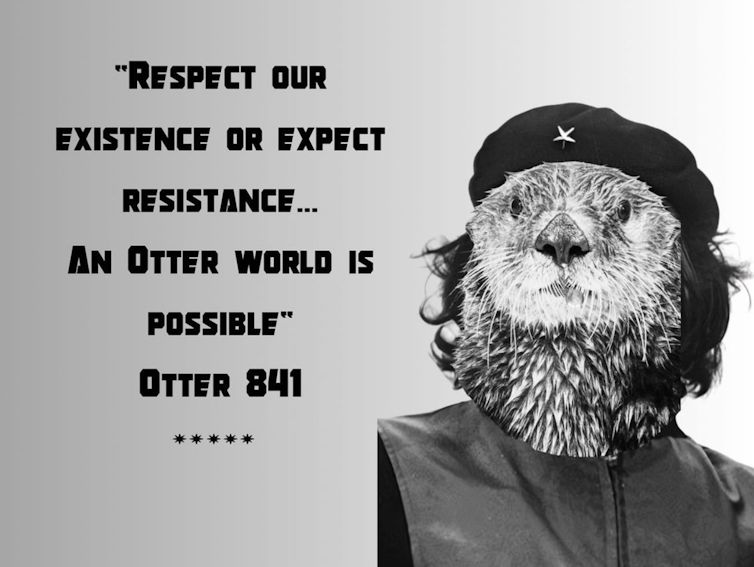And I made a quick GIF from using their words.
[And w/ my cochlear implant I’m even learning how to hear music again]


Experts in autocracies have pointed out that it is, unfortunately, easy to slip into normalizing the tyrant, hence it is important to hang on to outrage. These incidents which seem to call for the efforts of the Greek Furies (Erinyes) to come and deal with them will, I hope, help with that. As a reminder, though no one really knows how many there were supposed to be, the three names we have are Alecto, Megaera, and Tisiphone. These roughly translate as “unceasing,” “grudging,” and “vengeful destruction.”
I feel as though I have been waiting all my life for someone – a scholar – a scientist – to say what this article says. All my life all I have heard from both educated and uneducated people, whether in an artistic or a scientific context, is “anthropomorphism,” as if that were a cuss word. Yes, non-human animals are not human, by definition. But the fact that we have to word it that way itself screams “but humans are animals.” And since we are – and since all living things on this planet are related – why sould we keep denying that so many of them show human traits?
==============================================================

Alexandra Isfahani-Hammond, University of California, San Diego
Memes galore centered on the “orca revolution” have inundated the online realm. They gleefully depict orcas launching attacks on boats in the Strait of Gibraltar and off the Shetland coast.
One particularly ingenious image showcases an orca posed as a sickle crossed with a hammer. The cheeky caption reads, “Eat the rich,” a nod to the orcas’ penchant for sinking lavish yachts.
A surfboard-snatching sea otter in Santa Cruz, California has also claimed the media spotlight. Headlines dub her an “adorable outlaw” “at large.”

Memes conjure her in a beret like the one donned by socialist revolutionary Ché Guevara. In one caption, she proclaims, “Accept our existence or expect resistance … an otter world is possible.”
My scholarship centers on animal-human relations through the prism of social justice. As I see it, public glee about wrecked surfboards and yachts hints at a certain flavor of schadenfreude. At a time marked by drastic socioeconomic disparities, white supremacy and environmental degradation, casting these marine mammals as revolutionaries seems like a projection of desires for social justice and habitable ecosystems.
A glimpse into the work of some political scientists, philosophers and animal behavior researchers injects weightiness into this jocular public dialogue. The field of critical animal studies analyzes structures of oppression and power and considers pathways to dismantling them. These scholars’ insights challenge the prevailing view of nonhuman animals as passive victims. They also oppose the widespread assumption that nonhuman animals can’t be political actors.
So while meme lovers project emotions and perspectives onto these particular wild animals, scholars of critical animal studies suggest that nonhuman animals do in fact engage in resistance.
Are nonhuman animals in a constant state of defiance? I’d answer, undoubtedly, that the answer is yes.
The entire architecture of animal agriculture attests to animals’ unyielding resistance against confinement and death. Cages, corrals, pens and tanks would not exist were it not for animals’ tireless revolt.
Even when hung upside down on conveyor hangars, chickens furiously flap their wings and bite, scratch, peck and defecate on line workers at every stage of the process leading to their deaths.
Until the end, hooked tuna resist, gasping and writhing fiercely on ships’ decks. Hooks, nets and snares would not be necessary if fish allowed themselves to be passively harvested.
If they consented to repeated impregnation, female pigs and cows wouldn’t need to be tethered to “rape racks” to prevent them from struggling to get away.
If they didn’t mind having their infants permanently taken from their sides, dairy cows wouldn’t need to be blinded with hoods so they don’t bite and kick as the calves are removed; they wouldn’t bellow for weeks after each instance. I contend that failure to recognize their bellowing as protest reflects “anthropodenial” – what ethologist Frans de Waal calls the rejection of obvious continuities between human and nonhuman animal behavior, cognition and emotion.
The prevalent view of nonhuman animals remains that of René Descartes, the 17th-century philosopher who viewed animals’ actions as purely mechanical, like those of a machine. From this viewpoint, one might dismiss these nonhuman animals’ will to prevail as unintentional or merely instinctual. But political scientist Dinesh Wadiwel argues that “even if their defiance is futile, the will to prefer life over death is a primary act of resistance, perhaps the only act of dissent available to animals who are subject to extreme forms of control.”
Despite humans’ colossal efforts to repress them, nonhuman animals still manage to escape from slaughterhouses. They also break out of zoos, circuses, aquatic parks, stables and biomedical laboratories. Tilikum, a captive orca at Sea World, famously killed his trainer – an act at least one marine mammal behaviorist characterized as intentional.
Philosopher Fahim Amir suggests that depression among captive animals is likewise a form of emotional rebellion against unbearable conditions, a revolt of the nerves. Dolphins engage in self-harm like thrashing against the tank’s walls or cease to eat and retain their breath until death. Sows whose body-sized cages impede them from turning around to make contact with their piglets repeatedly ram themselves into the metal struts, sometimes succumbing to their injuries.
Critical animal studies scholars contend that all these actions arguably demonstrate nonhuman animals’ yearning for freedom and their aversion to inequity.
As for the marine stars of summer 2023’s memes, fishing gear can entangle and harm orcas. Sea otters were hunted nearly to extinction for their fur. Marine habitats have been degraded by human activities including overfishing, oil spills, plastic, chemical and sonic pollution, and climate change. It’s easy to imagine they might be responding to human actions, including bodily harm and interference with their turf.
Sharing memes that cheer on wild animals is one thing. But there are more substantive ways to demonstrate solidarity with animals.
Legal scholars support nonhuman animals’ resistance by proposing that their current classification as property should be replaced with that of personhood or beingness.
Nonhuman animals including songbirds, dolphins, elephants, horses, chimpanzees and bears increasingly appear as plaintiffs alleging their subjection to extinction, abuse and other injustices.
Citizenship for nonhuman animals is another pathway to social and political inclusion. It would guarantee the right to appeal arbitrary restrictions of domesticated nonhuman animals’ autonomy. It would also mandate legal duties to protect them from harm.
Everyday deeds can likewise convey solidarity.
Boycotting industries that oppress nonhuman animals by becoming vegan is a powerful action. It is a form of political “counter-conduct,” a term philosopher Michel Foucault uses to describe practices that oppose dominant norms of power and control.
Creating roadside memorials for nonhuman animals killed by motor vehicles encourages people to see them as beings whose lives and deaths matter, rather than mere “roadkill.”
Political scientists recognize that human and nonhuman animals’ struggles against oppression are intertwined. At different moments, the same strategies leveraged against nonhuman animals have cast segments of the human species as “less than human” in order to exploit them.
The category of the human is ever-shifting and ominously exclusive. I argue that no one is safe as long as there is a classification of “animality.” It confers susceptibility to extravagant forms of violence, legally and ethically condoned.
I believe quips about the marine mammal rebellion reflect awareness that our human interests are entwined with those of nonhuman animals. The desire to achieve sustainable relationships with other species and the natural world feels palpable to me within the memes and media coverage. And it’s happening as human-caused activity makes our shared habitats increasingly unlivable.
Solidarity with nonhuman animals is consistent with democratic principles – for instance, defending the right to well-being and opposing the use of force against innocent subjects. Philosopher Amir recommends extending the idea that there can be no freedom as long as there is still unfreedom beyond the species divide: “While we may not yet fully be able to picture what this may mean, there is no reason we should not begin to imagine it”.![]()
Alexandra Isfahani-Hammond, Associate Professor Emerita of Comparative Literature, University of California, San Diego
This article is republished from The Conversation under a Creative Commons license. Read the original article.
==============================================================
Alecto, Megaera, and Tisiphone, this article is a breath of fresh air. Of course the answer to my question above is that we deny human traits in animals so we won’t have to feel guilty about failing to respect them. And that is not only wrong, but shortsighed and stupid. If every non-human animal were to disappear overnight – so would we. For starters, we would starve. And that goes for vegans as much as for omnivores. Without pollinators, much of our fruit woud disappear, including at least some fruits we consider to be vegetables. We might be able to grow some grains – but there would be a lot less to bake without eggs and milk. And that’s assuming the soil could be maintained. Humans would be the only source of manure+, and there’d be no earthworms. Clothing would also suffer. No wool, mohair, cashmere, alpaca, angora, or silk. If the disapperance were to be retroactive, there’d also be no fossil fuels – which pretty much means no synthetic fabrics and of course no plastics. And then there’s language. No one could be insulted as being beastly or waspish. No one would be free as a bird, or fat as a pig. Some colors would never be seen again – red dye, for instance, comes from an insect. And this is but a tiny fraction of what would be lost. Sure, we wouldn’t have malaria or CoViD – but at what a price!
I’m with Isfahani-Hammond here. A world with true freedom may be unimaginable now, but that’s no reason not to try to imagine it, and try to work toward it.
The Furies and I will be back.

Yesterday, I brought up the live hearing, coming in on the testimony of the Speaker of the Arizona House, Rusty Bowers. I then watched the testimony of Georgia’s Raffensberger and Sterling. I had to return later to catch the Georgia election workers Andrea (Shay) Moss and her mother Ruby Freeman. as well as the opening and closing statements. You know, we have been talking about Republicans putting party before country. But with regard to this insurrection, we have been wrong. They were putting prsonal gain – probably in some cases only personal whim – before both party and country. I’ve seen some people on the net saying, “I love it when they eat their oen,” I don’t. I don’t love bottom-of-the-cesspool depravity, and that’s what this is. Disgusting. And also dangerous. If they will eat their own, they will eat anything and anyone. We have also been saying they are moving toward fascism, and by the book they certainly are. But I question whether actual fascism is their goal, or whether tha goal is total chaos – a state with even less predictabiity than anarchy.
When I returned to the hearing at the YouTube link provided at house.gov (to the committee’s channel) I happened to notice that that channel has 29.4K subscribers. I know, not a lot in the scheme of things, but those are only the people who are watching at this channel. That does not include anyone who is watching at PBS, MSNBC/NBC, CBS, ABC, or CNN, or anyone who is watching with The Lincoln Project or Meidas Touch, and that probably does not exhaust the list of sources. Somewhere I also read even Fox is now carrying it (the implication being more than just on Fox Business), but I can’t verify that.
Cartoon –

Short Takes –
The Daily Beast – Here’s What the Insecure Insurrectionists Don’t Get About America
Quote – America was not actually built on unlimited individual freedom, as a shocking number of Americans seem to believe it is these days. The foundation of our nation, the bedrock of its multi-century success, is the philosophy of democratic liberalism: the government will not interfere with your pursuit of happiness unless your pursuit interferes with that of other people.
Click through for more (including a point about the poem “America the Beautiful”), but the quote is the bottom line. I also feel that one verse of “America the Beautiful is not enough. I tend to focus onthe second verse (“God mend thine every flaw – Confirm thy soul in self control, thy liberty in law”), but the third verse may be even more important.
CPR News – A Colorado startup wants buildings to suck up carbon, one living concrete block at a time
Quote – His company’s proposed alternative is a “bio-cement” first developed at the University of Colorado Boulder. Inside the Colorado company’s warehouse, sand is loaded in block-shaped molds with micro-algae, which binds the material through the same process corals and oysters use to build their shells. The final masonry units feel like hardened sand castles. While the process takes energy, Burnett said algae absorbs enough carbon to make the blocks 90 percent less carbon-intensive than traditional concrete.
Click through for the interview – yes, it’s an interview, but there’s what appears to be at least a partial transcript. It’s good news locally but appears to have potential – and we need every possible step (and may already be too late.)
Food For Thought

